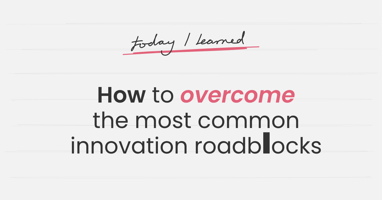With global digitization and consumer power driving a faster rate of change in markets than ever before, companies are updating business process models to be lean, dynamic and responsive to shifting conditions. Modernizing the Stage-Gate ® methodology to adapt to this new world, Dr. Robert Cooper has built Agile components into each stage of his renowned gated process.
Drawing from Dr. Cooper's recent webinar Implementing the Agile-Stage-Gate Model for Manufacturers hosted by Management Roundtable, Inc., here are the key lessons and benefits from using Agile methodology in conjunction with Stage-Gate.
Key Lessons from Agile
Focus on results, not on documentation – No one reads the bulky packages you've prepared for documentation. Instead, hone your efforts towards accomplishing your short-term goals in each sprint.
Show stakeholders something that works – Sharing a crude model of plans to come doesn't give stakeholders much to respond to. Demonstrate to management and the customer something real and working for feedback and buy-in. Do this often and adjust development plans based on responses.
Move quickly through sprints – Keep your sprints short to move efficiently from gate to gate. Leverage the daily scrum meetings with your team to stay connected. Use visual tools like burndown charts, and product and sprint backlogs to keep your team on track.
The Benefits: Why Agile-Stage-Gate Works
It gets the product right.- The iterative development cycles validate the product by getting something physical in front of customers early, often and economically.
- Technical issues can be seen and fixed right away given the early proof of concept.
- Making fast revisions based on changing requirements quickly gets the best product in front of the customer.
- Traditionally “the problem” is identified and understood by investigations in initial planning stages. Requirements for the solution are defined based on “the problem” as seen by the team before development begins.
- In reality, “the problem” can only truly be understood by inciting customer feedback and experimental trial and error. Thus, understanding the requirements is part of the solution-finding process.
- Because sprints have a fixed duration (and a rather short one at that), project teams are empowered to commit to certain deliverables at the beginning of each sprint. They are then under self-imposed pressure to deliver within the agreed timeframe.
- Tasks within sprints are earmarked for the expected time it will take to complete the task. This helps the team to stay focused on accomplishing tasks in the allotted time and prevents them from overcommitting.
- Traditional project teams are often under-resourced and spread too thin, which translates to slow progress on projects.
- Agile-Stage-Gate teams are dedicated to a single project. The Agile methodology places so much emphasis on focusing on one thing at a time that major projects are accomplished effectively and efficiently.
- Dedicated teams and daily scrums ensure each member is aware of moving parts and the team is a well-oiled machine.
Related Resources
Agile Development Resources
- Watch Using Accolade to Manage Agile Software Development Processes >
- Read Leveraging Agile Principles in Non-Software Product Development >
- Read Spiral Development: Lean vs. Stage-Gate >





